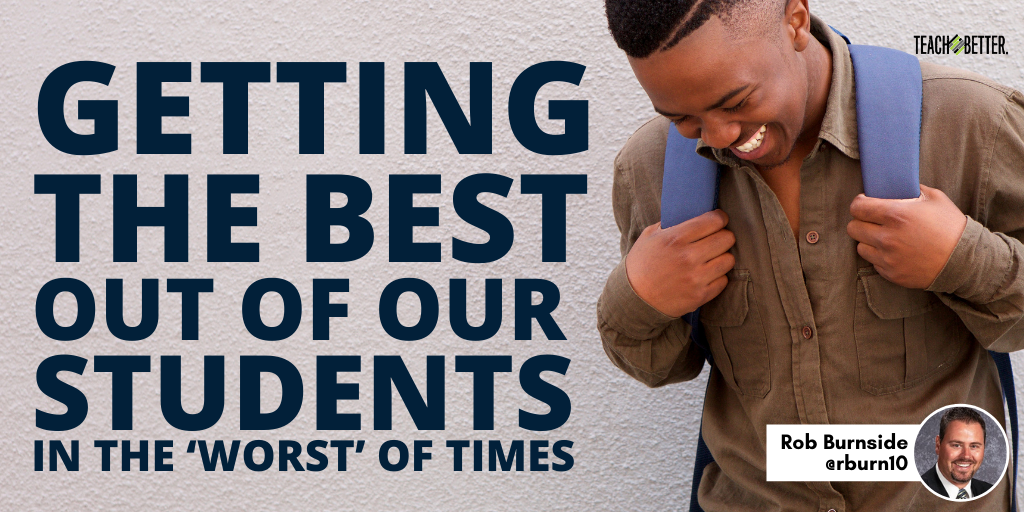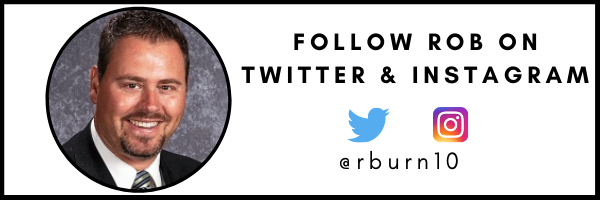TL;DR:
- Getting the best out of our students in the ‘worst’ of times means fostering learning cultures that embrace respectful discussion and discourse, learning the needs of your classroom and school, and providing great instruction.
- Committing to fostering cultures in schools that embrace diversity will help create future generations that build a better world.
- Educators have to teach students how to listen, how to speak their truths in a manner that does not disparage others, and how to reflect when they feel challenged.
“I know you feel these are the worst of times, I do believe it’s true
When people lock their doors and hide inside,
Rumor has it it’s the end of paradise…”
The Best of Times – Styx – Words and Music by Dennis DeYoung
Schools Are a Microcosm of Society
When Dennis DeYoung penned this 1981 hit for his band, late 1970’s-early 1980’s staple Styx, is it possible that he was prophesying 39 years into the future and issuing a statement on the mind-numbing entry into the history books that is the year 2020?
Highly unlikely, but nonetheless, its words ring true as we find ourselves possibly returning to stay-at-home orders, curfews, and capacity restrictions due to the coronavirus. And if the virus miraculously disappears within a matter of days—spoiler alert, it will not—then we still face the heightened cultural climate centered around race relations and the most vitriolic presidential election in our nation’s history.
To make another pop culture reference, this time to quote Kramer from an episode of Seinfeld, “WHO wants to have some fun?” In this fictional episode, the character defines fun as going to the beach and hitting golf balls into the ocean.
If this question was asked in a 2020 reality TV show, the proposal might be to take the toxic societal mix that is a pandemic, social strife, and political turmoil and spend your days managing a room or a facility stocked full of 5 to 18-year olds. Schools truly are a microcosm of society as a whole, so it would stand to reason that when chaos reigns outside our walls, it is likely to seep its way inside as well.
As daunting as this seems, here is the harsh reality: our students need us.
They need our doors to be open. If we are in or enter a period of remote learning, they need us, even more, to focus on relationships and forge connections with them. In ‘normal’ times, we often coach our students who come from hard backgrounds. Incidentally, this may be every student at some time in their lives, to strive to make time at school their respite from the disorder of his/her external world.
We encourage them to view school as one thing in their lives that they can control. And when they are in our care, we strive to create a culture in which they know for 8 hours that they have the support and care that they crave and desperately need. If we take this approach during ‘normal’ times, why would we believe that things are different during this worst of times in our nation? The answer is obvious…it isn’t.
We will see them at their best, which is both our ultimate goal and our best hope of helping them grow into the adults and citizens who will make our future better than our present. Click To TweetHerein lies the challenge: societal baggage does not check itself at our doorsteps when our students enter our doors.
Just like notebooks, computers, pencils, and other school necessities that are in student bookbags when they come into our buildings, our students carry these struggles and the ideologies with them as they trudge toward their homerooms every morning. In spite of the fact that we want to create a utopian society for 8 hours of the day for every child, that simply is not the way things work. So how do we handle it?
The ultimate resolution leads us to realize that it is a call to action for us, not only for our students, but for our nation, our society, and our world.
This is a call that is in fact larger than any academic calling we believe we have, to instill within our next generation of leaders that we are a richer society because of a diversity of cultures, ideals, and values. Our students do not see this from leaders on either side of the aisle. And they may not see it in their homes, on social media, or anywhere else where they get information about their world.
Just as we ask our students to view school as that respite from outside chaos, we can strive to make our schools spaces that…wait, no, we cannot. Even more prevalent than those items that come into our schools stuffed into overloaded backpacks, our students walk into our schools with the ideologies and viewpoints that they learn in their homes. Which brings us back to, how do we handle it?
There is no magic algorithm that is the perfect fix for this challenge. It starts with realizing that while this is a burden we all carry, this is also an opportunity. By committing to fostering cultures in our schools that embrace the diversity of people and ideals, we accept the foremost and noblest challenge that we face in education: to create a future generation that builds a better world than we have in 2020. So, what are some tangible things we can do to nudge the needle in this direction?
Foster learning cultures that embrace respectful discussion and discourse.
It is critical to remember that our students do not hang their opinions and beliefs in their lockers like their lunch bags and jackets when they come into school. That’s a good thing. We need differing viewpoints in our schools, much like we need them in our political arenas and our society. A leader of a major corporation once stated, “If I’m the only voice in the room, then I don’t need other people in the room.”
In spite of the zero-sum game that we often see in the political realm, in newscasts, or on social media, our system was designed to capitalize on a diversity of ideals and beliefs. The goal is to take the best from both sides and build something unique and special, weeding out those ideals that are founded in hatred and bigotry as we build. Teach that to our students. Foster that mindset in our classrooms and our schools. Live that example in how we lead classroom discussions. Lead by example in learning when we hear ideals and beliefs that differ from our own.
Here is the catch: this is heavy lifting. It takes more than simply stating that our classrooms and schools are safe spaces for students to share their thoughts. We have to teach students how to listen, how to speak their truths in a manner that does not disparage others, and how to reflect when they feel challenged. In his powerful book Not Light, But Fire, author and educator Matthew R. Kay speaks to this as well as providing a process by which educators can do this.
Learn the Needs of Your Classroom and School
This seems obvious, but it is a much deeper chasm than it appears. All schools face unique challenges in this regard. Schools that are very diverse face the challenge of having students with vastly different backgrounds and viewpoints in the same melting pot. And they must walk a tightrope in maintaining equitable balance.
But the challenge is no less significant in more homogenous schools. Here is why. Place yourself in the shoes of a minority student in a school that has a 95% population of the same race. Consider the position of the only Jewish or Muslim student in a school in a heavily Christian community. Or what about a poor student in a school with only 5% of its students qualifying for free-and-reduced lunches, that is geographically sandwiched between two country-club communities? Or the teenager who is struggling with his/her identity, or learning that who he/she finds attractive goes against societal and community norms?
In all cases, students need champions. This is even more necessary when students fall in those very exclusive populations. They need to know they are valued. Even more than that, they need to know that their life experiences are not only valued, but necessary. Their stories need to be told so that others learn and grow and develop the necessary empathy that we need for the next generation to be better than ours.
[scroll down to keep reading]
Provide Great Instruction
In politics, the common phrase is “It’s the economy, stupid.” In education, replace economy with instruction. What is the best way to get our students to leave their negative baggage at the door and focus on school? Simple. It’s on us.
Provide innovative, engaging instruction. We need to ‘up our instructional game’ to keep kids interested and connected. Make sure that schools in 2020 and beyond do not look and feel the way that they did in 1920…or 1980…or even 2010. If we provide interesting, innovative, and engaging instructional practices, our students will focus on what is going on in our classrooms. We will see them at their best, which is both our ultimate goal and our best hope of helping them grow into the adults and citizens who will make our future better than our present.
We often hear the cliché phrase, “kids these days.” This is purely theory, but when we peel away the layers, kids are not different today than they were in 1920, or 1980, or 2010. The world is a vastly different place, but kids are still kids. They still carry what they have with them into our schools, but our hope as educators lies in the fact that we are different. We know the challenge, and we are up for it.
Dennis DeYoung’s song ultimately was a love song that had one theme…that in spite of the muck and the mess of the world, there was something that existed that transformed the worst of times into the best of times. In our schools, that ‘something’ exists as well. It is the educators who understand the power they have and accept the challenge.
About Rob Burnside
A veteran high school administrator who believes that he continues to evolve as an educator, Rob Burnside shares his perspectives developed over 25 years of educational experience. Currently the principal of New Richmond High School, located on a hill overlooking the Ohio River just outside the Cincinnati outerbelt, he has spent time as an English teacher, a coach, and an assistant principal as well as filling other roles within his school communities. In addition to his role at his school, he and his wife Angel are the parents of six children. He has shared his family’s journey through international adoption in a soon-to-be-published book entitled The Reluctant Adopter.



